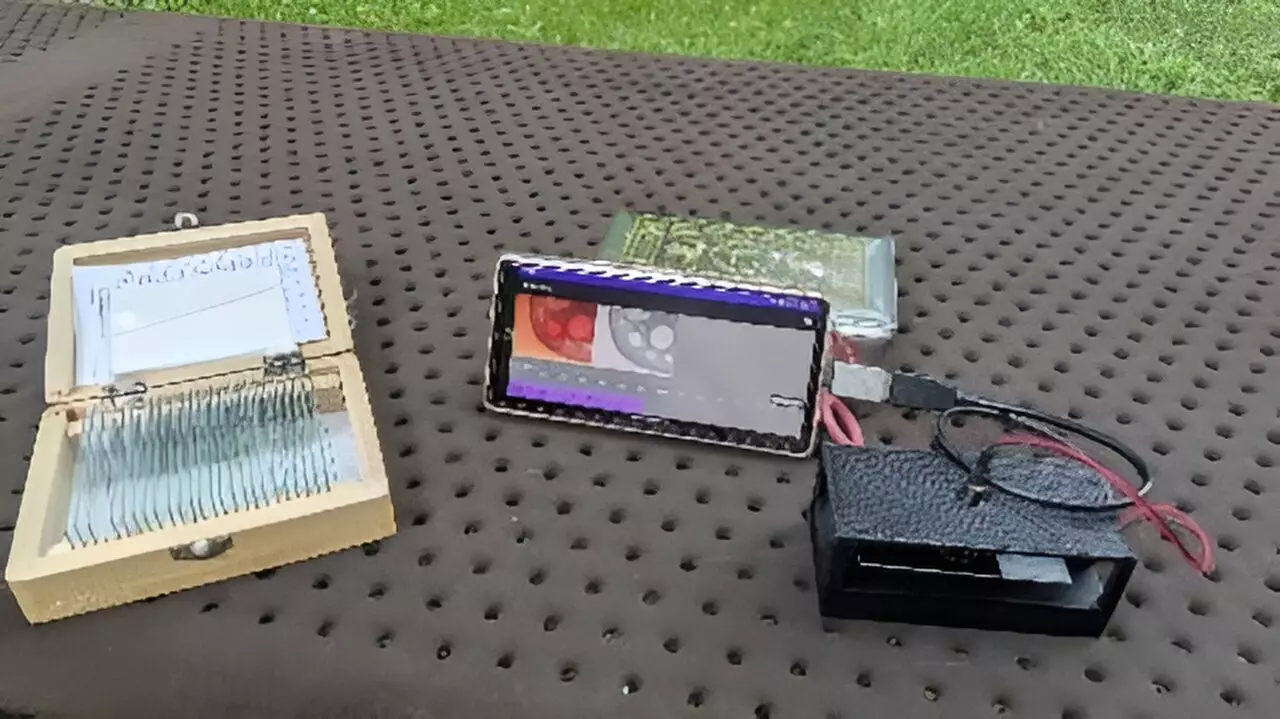In recent years, the field of microscopy has witnessed transformative advancements, but the latest breakthrough— a smartphone-based digital holographic microscope—stands out as a pivotal innovation. Researchers have ingeniously developed a device that not only significantly enhances the accessibility of precise 3D measurements, but also redistributes the power of cutting-edge technology into the hands of educators, healthcare professionals, and students. This phone-compatible device, with its low production costs and portability, could bridge gaps in diagnostics and research that have previously been hampered by complex systems and expensive equipment.
Revolutionizing Accessibility
Historically, digital holographic microscopes have been encumbered by intricate optical setups and the necessity for a personal computer, which has made them less practical for a wide-ranging audience. This advancement is especially relevant in resource-limited settings, where traditional microscopes can be a significant financial and logistical burden. The ability to print the necessary components with a 3D printer and link them to readily available smartphones creates an environment ripe for educational exploration and medical diagnostics, particularly in developing nations where diseases such as sickle cell anemia frequently go undiagnosed.
“Holographic microscopy using smartphones democratizes access to scientific exploration,” says Yuki Nagahama, the research team leader from Tokyo University of Agriculture and Technology. The implications of this lightweight microscope are manifold, offering the unique ability to use such technology in the field—a feature once thought reserved for luxury laboratories.
The Mechanics of Innovation
The ingenuity of this device lies in its operational mechanism. Traditional methods of holography rely on capturing intricate interference patterns via extensive optical systems. However, the smartphone-based concept simplifies this conducting process. By utilizing a method known as band-limited double-step Fresnel diffraction, researchers have cleverly reduced data points to enable quicker image reconstruction on the device.
This sophisticated approach presents a dual achievement: it not only allows for faster computational processing but also sidesteps the often cumbersome requirement for separate computing devices. Indeed, the user benefits from an interactive experience, being able to pinch and zoom on holograms almost instantaneously. The attractive facet of this feature may entice students to engage with science dynamically, viewing organisms and structures previously limited to textbooks.
Transformative Applications
The implications for educational institutions are nothing short of groundbreaking. Imagine classrooms where students can closely examine living organisms, from microscopic pond creatures to plant cells, right from their own smartphones. The simplistic interface and hands-on engagement with technology foster a new generation of researchers, thinkers, and scientists.
Moreover, one cannot overlook the medical applications as well. The enhanced accessibility of diagnostics through this technology may lead to faster detection of health conditions that currently pose challenges in low-resource settings. Being able to observe and diagnose conditions using familiar technology could yield significant improvements in healthcare responsiveness and outcomes, future-proofing medical education and practice.
A Potential Drawback: Computational Limitations
However, with progress comes complexity. While the researchers have made strides in computational efficiency, challenges remain. Processing holograms through a smartphone may still yield unintended artifacts in images, compromising their quality. Although the incorporation of deep learning techniques is on the horizon to improve image quality and minimize these artifacts, it serves as a reminder that innovation is typically accompanied by hurdles that necessitate further refinement.
The pursuit of clarity in microscopic imagery highlights the delicate balance between advancement and accessibility. The limitations of computational power in smartphones, while improving, are a consideration needing continuous address.
The Future of Digital Microscopy
As we look ahead, the blend of AI with this smartphone-based apparatus stands to not only enhance operational quality but also revolutionize how students and professionals interact with microscopic data. The ambitious goal to incorporate machine learning into this system reflects an understanding of the rich possibilities that lie beyond initial functionalities.
In an age where technology significantly shapes education and healthcare, this smartphone-based digital holographic microscope exemplifies how innovative thinking can dismantle barriers and forge connections across various disciplines. From the classroom to the clinic, this compact yet powerful device represents more than just a new tool; it’s a defining leap toward the future—a future where access to knowledge and resources is equitable, engaging, and transformative. With continued effort and exploration, the smartphone in our pockets may indeed become an invaluable ally in the quest for knowledge and understanding.

